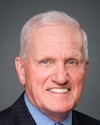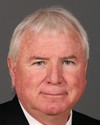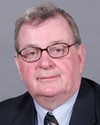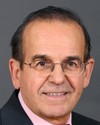Let me say something, sir. First, our deployments are moving to condition-based, not strictly time-based, and we're doing a lot of work to make sure we get this right. Some of the deployments may be slightly longer. With those in senior command appointments, such as General Fraser, you simply cannot have a rapidly changing face. If you're going to develop a relationship with the governors of the provinces of Kandahar, Helmand, Zabul, Oruzgan, and all the folks engaged there, you've got to have a bit more time. So condition-based is where we're going on our deployments.
Some of the more intense deployments may be less than six months. We'll judge that as we go through this, and we'll be prepared to respond and shape it for the best effect out the door. So condition-based is one part there.
Secondly, we have to grow the force. Many of our units are hollow units. We need to be able to proceed with the recruiting with the necessary financial resources to be able to pay for all that, and grow the force and get those units—particularly right now, the combat units, the infantry, but not just—grown to their capacity back here in Canada.
What happens now is this. Let's say we have a requirement in the battle group that goes out with three infantry companies. In order to get three infantry companies—because they're not manned at the 140 or so that we need them manned at, they're manned at 90 or 95—we actually have to squash together four, five, or even six companies to build three of the right capability to go out the door. We have to grow the force, and we're turning our attention to that in a very precise way.
Sir, we have to use all of the Canadian Forces to do the missions. Over this past 10 years, all of us have been busy, but deployed operations have been the most intense and most demanding on people. I don't have the exact numbers, but I believe in my heart that for 100% of the deployed operations, which we have run over this last 12, 13, 14, or 15 years, we have used 40% to 45% of the Canadian Forces to do them.
I'll give you an example of how a decision made 10 years ago impacts us now, and we only see the implications of it. We received some huge financial cuts back in 1994-95. Part of the way we saved money, as we slashed the Canadian Forces, and slashed our equipment and our people—have I beaten on that enough?—was to take it out of posting budgets.
So we took what was $500 million to $600 million—where we move people around the country for the best blend of training, experience, and balance in what they're doing—out of operational units into a training establishment where perhaps life would be more predictable. We took a huge amount of that money away. We locked people into units, which we thought was a great thing, because stability is important. It is important, unless you're locked into a combat unit that's going back on operations every 18 to 24 months. So that signaller in there, that young engineer, is the same person doing all the missions, and the ones in the infrastructure in the training system.... Because we didn't have the money to put them back in those units, we ended up with some guys and gals with medals out to their elbow and some with none.
So we have to balance and better use that one. We are going to make sure we put the focus on where the most intensity is for the specialties and have as many of those...so we rotate people through as little as possible. My ideal is that for each person going to Afghanistan, between now and the end of the mission in February 2009, it will be for the first time. We know that's not going to be possible, but we aim to do so as much as we can.
We will re-role people who are in the training system right now, designed to be something else. We'll say for the next two or three years, you're going to be infantry, and then you'll go back to your primary MOC. We're going to go out to the reserves and see how many people we can attract to do component transfers for a longer-term period, or else for longer contracts with us, and give them all the training and work them up. In fact, we'll use every single asset we have.
Most importantly, we'll look after the people we have doing the job with a whole variety of measures, including fixing the allowance discrepancy that was talked about earlier. And equally important, sir, we're going to look after their families in a whole variety of ways that we have never done in this past decade and a half.







